
|
|
|
|
|
| around Oeuf | |
| villages neighbouring Oeuf | |
|
|
|
|
|
|
|
|
|
| guinecourt | |
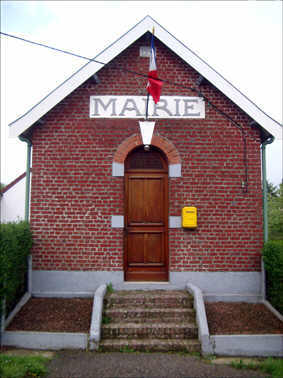
|
Guinecourt is Oeuf's closest neighbour. With only sixteen inhabitants it is the smallest village in the Pas-de-Calais and one of the smallest in France. Yet it is a completely independent municipality with a mayor, two vice-mayors and three council members. Its mairie (municipal hall, photo) may well be the smallest in France. |
|
|
|
| croisette | |

|
Croisette is located a few kilometres East of Oeuf. With 308 inhabitants it is somewhat larger than Oeuf and even has two pubs. Its main attraction however is the splendid garden of Marie-Ange Herduin (photo) which is open to the public (entrance fee). |
|
|
|
| siracourt | |
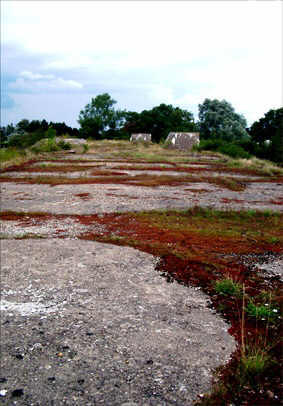
|
During World War II in Siracourt the occupier built a bunker of over two hundred metres in length, intended for the assembly and launch of V1's (flying bombs) aimed at London. Intensive allied bombing raids prevented the bunker from ever becoming operational. Following the war the completely destroyed village of Siracourt was rebuilt by Canadians. Its current typical architecture (large barns with a concrete frame and oversized roofs covered with artificial slate) still testifies to this help. The bunker itself was damaged in the bombardments but remained largely intact. Its roof can be accessed at one's one risk (beware: at some places there are holes in the roof several metres deep and elsewhere reinforcement rods stick out). In the course of time a beautiful tapestry of sedum has grown on the bunker roof (photo). In 2002, in the presence of a Russian survivor, a plaquette was attached next to the bunker to commemorate the gruesome fate of the countless slave labourers from the Soviet Union who were used in building it. |
|
|
|
| beauvois | |
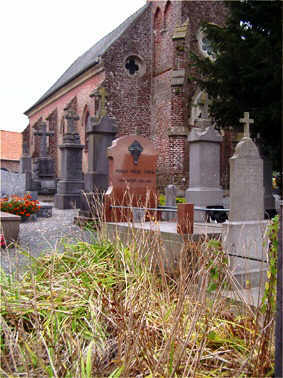
|
Beauvois is tied to Oeuf in so far as that for many years one priest served the parishes of both Beauvois and Oeuf. Hence the absence of a presbytery in Beauvois (it has its own church though, photo). |
|
|
|
| humières | |
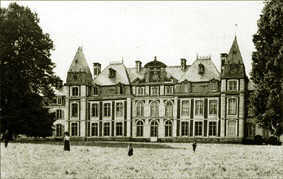
|
Humières is an elegant village of about the same size as Oeuf. Its main landmark is the chateau, or whatever is currently left of it. Once a jewel of the region the château now is little more than a ruin as a result of standing empty and neglected for decades. When I first saw it in 1997 I judged it still repairable. Since then decay, helped by several severe storms, has struck even harder. Its very sorry state has not stopped the Belgian owners from beginning the repairs some years ago. The former coach house now seems to be saved. Of the château itself the roof of the East wing has been repaired. Maybe then this sad story will have a happy ending after all. Humières also has a claim to fame with its Lourdes-grotto, which makes it a pilgrimage site of sorts. Dozens of plaquettes attached to the interior of the grotto (photo) express gratitude towards Our Sweet Lady of Lourdes for successful intervention during illness or for help received with other problems. |
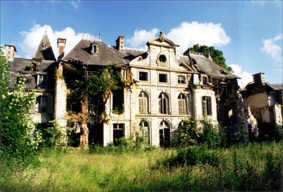
|
|
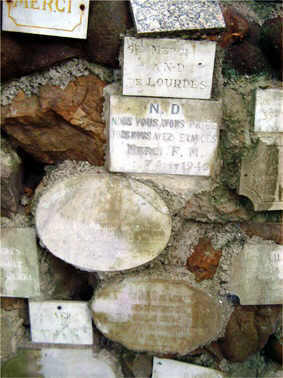
|
|
|
|
|
| noyelles-les-humières | |
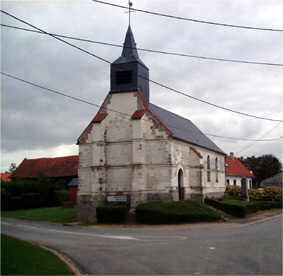
|
Noyelles-les-Humières is a small village (57 inhabitants) with a beautifully restored church. In the middle of the village we find Occamat 62, a merchant in second hand goods, mostly restaurant equipment, building materials and tools. |
|
|
|
| willeman | |
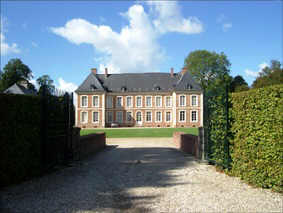
|
Willeman is beautifully situated in the valley of a stream (La Wawette) that rises from the village itself and flows into the Canche. The simple yet distinguished château from the seventeenth century is a further addition to its charm. The local church (engraving) is an eglise fortifiée, a church that doubled as a defendable shelter for the villagers in times of need. The Dutch sounding name of the village is said to originate from the founder of the village, a Dutch monk. Willeman has two small camping sites, a gite (Au Ruisseau, British owned) as well as chambres d'hôtes. |
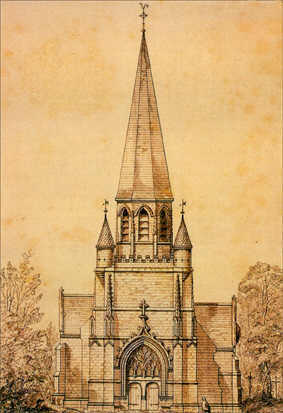
|
|
|
|
|
| linzeux | |
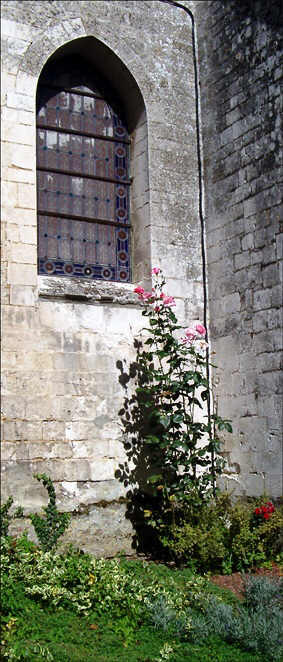
|
Linzeux is one of the few villages that can actually prove their old age. In a charter from Charlemagne dating from the year 806 Linzeux is specifically mentioned. In 1932 a large underground shelter (a gallery connecting several rooms) was discovered under the church floor. This shelter probably dates from the sixteenth century. |
|
|
|
| © 2005 - 2010 Rob Zeldenrust, Oeuf-en-Ternois, France. | |
